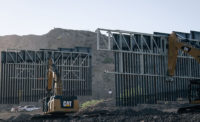Numerous studies warn about the challenges ahead in meeting the construction industry's demand for talent, and point to key employment risks: continued volatility of workforce needs and composition; scarcity of skilled labor, driven by demographic shifts; and the intense need for new and broader skill sets at all levels, driven by surging technology. What should the industry do to attract more talent?
1 Make talent management a strategic priority
Traditionally, workforce management in construction was equivalent to living a boom-to-bust cycle: hiring and firing followed the general trend of the economy. Winning the war for talent, however, requires a fundamentally different and longer-term approach. The first step involves strategic workforce planning, i.e. thinking strategically about the company’s future demand in terms of quantity and quality of skills, and the likely availability of those skills to systematically plan recruitment, retention and training.
One quick look at the demographics of the construction industry, and you can see how important planning is.
The industry also is undergoing a rapid digital transformation –– which requires radically different skill sets, and positions the industry in competition with tech companies such as Google or Apple for data scientists and IT experts.
For construction CEOs, people and talent management has to become a top priority, because for students and young professionals—it is already a key factor in their choice of employer.
2 Rejuvenate corporate culture
 |
| Ibrahim S. Odeh |
When Elon Musk, exasperated by the traffic in Los Angeles, tweeted his intention to develop a tunnel-boring machine and create underground roadways, many people would have dismissed it as “yet another crazy idea coming out of Silicon Valley.”
Some construction-industry participants, though, including the German tunnel-boring specialist Herrenknecht, took it far more seriously.
By setting out a bold vision and creating a culture that is undaunted by tradition, Musk and other successful innovators manage to attract the best talent from very different fields and to defy standard industry practice. In contrast, many or most construction companies are characterized by a conservative, ‘fear of failure’ corporate culture and hampered by organizational inertia.
Culture is a talent magnet, and construction companies need to implement a corporate culture that challenges the status quo and embraces innovation wholeheartedly.
3 Invest in diversity
“Pale, male, stale” is so yesterday, as one blogger pointed out. Yet that kind of workforce persists widely in the construction industry: male employees with an engineering background still predominate, despite the demographic changes and the industry’s digital transformation.
Construction companies really need to tap into non-traditional pools – community specialists, women, and those with backgrounds in tech or IT or data science.
A recent study by The Boston Consulting Group found a clear link between workforce diversity and innovation – mixed teams with diverse industry backgrounds and career paths tend to make a particularly powerful impact.
As the construction industry continues its tech-driven transformation, it increasingly needs different and more flexible skill sets. Companies need to hire on the basis not just of existing skills but also of potential.
4 Leverage technology and innovation
 |
| Michael Buehler |
By embracing innovation and new technologies, companies not only make themselves future-ready but can also meet the talent challenge.
Increased automation, off-site pre-fabrication and new collaboration tools will help to enhance productivity (and wages) as well as reduce the time spent on-site—two key wishes for most respondents in our survey.
Some innovations that are now standard in the automotive industry – exo-skeletons, human-robot collaboration, and ergonomic work processes – could benefit construction work too, making it less physically demanding and better suited to an ageing workforce.
5 Foster continuous learning and career development
Our survey revealed that for students and young professionals, one of the most appealing aspects of a potential job (second only to interesting job content) is learning and career development. Yet only 48% of respondents say the construction industry fulfills their expectations in that.
Continuous learning and career growth is particularly important in a radically changing industry environment that requires different skills. Construction companies should integrate it into their cultures through internal academies, partnerships with external training institutions, or both.
6 Create relevant incentives
No commentary on the subject of talent would be complete without some reference to the different priorities of Generations Y or Z. Today’s young talents look beyond salary packages and benefits, and emphasize flexibility, "own your time," purpose and ethics.
Many companies in the tech sector and others have already adapted their recruitment and retention schemes to reflect those new priorities; construction companies need to up their game if they are to compete in the quest for talent.
A Millennial might well be attracted by the opportunity to help transform a millennia-old industry— but only if he or she feels that the company is genuinely embracing the change.
7 Redefine the public image of construction
Construction still has a “dull and dirty” image now, but companies are well positioned to create a more appealing image—one of a dynamic and purpose-driven sector.
 |
| Santiago Castagnino |
In our survey, industry professionals proudly cited their beneficial impact on society (“we build things”), their contribution to national development, and their engagement with some of the world's most serious modern challenges, such as urbanization and climate change.
And it’s true, construction accounts for 6% of global GDP, creates the physical milieu for all other industries to flourish, and directly affects everybody’s quality of life through social infrastructure such as housing, hospitals, transport systems and schools.
What’s more, built structures and engineering achievements – whether the Egyptian pyramids, the Roman Colosseum, the Panama Canal, or skyscrapers like the Burj Khalifa – have always fascinated people, and continue to do so.
Construction stakeholders should collaborate more in communicating this impact, and should relay their fascinating stories more broadly by means of social media. Companies should start early, and go out to schools and universities to actively shape the image of the industry.
8 Collaborate systematically
The seven actions listed so far may take some time to implement, and will certainly take some time to succeed. They require a shift in paradigm, spanning the entire construction ecosystem.
One crucial facilitator will be collaboration between companies – to leverage synergies and coordinate campaigns.
Collaboration with external organizations is likewise crucial to provide continuous learning and career development for construction professionals and tailor curricula to industry's future needs.
One example, which leverages the new format of Massive Open Online Courses (MOOCs), is Columbia University’s Construction Project Management and Planning Specialization program that brings together 20 industry leaders from academia and companies.
It is the first on line educational platform, offered through coursera.org, to focus on courses in civil engineering and construction, with more than 21,000 students of all ages and from around the world completing it since its debut last October. The four-course program can be accessed for free, or can be taken, with completed assignments, to gain a certificate for a nominal fee.
These efforts will require a firm commitment from industry stakeholders, and often a considerable financial investment.
As always, any investment should be based on a clear and carefully prepared strategy that will pay off in the future.
In the words of Peter Drucker: “Developing talent is business’s most important task – the sine qua non of competition in a knowledge economy.”
This text was adapted from an article prepared for the World Economic Forum.
Ibrahim S. Odeh is Founding Director of the Global Leaders in Construction Management – Research Initiative at Columbia University. Michael Buehler is Head of Infrastructure and Urban Development at the World Economic Forum; and Santiago Castagnino is a Partner & Managing Director at The Boston Consulting Group;
Odeh can be reached at odeh@columbia.edu; Buehler at michael.buehler@wef.org; and Castagnino at castagnino.santiago@bcg.com;





Post a comment to this article
Report Abusive Comment